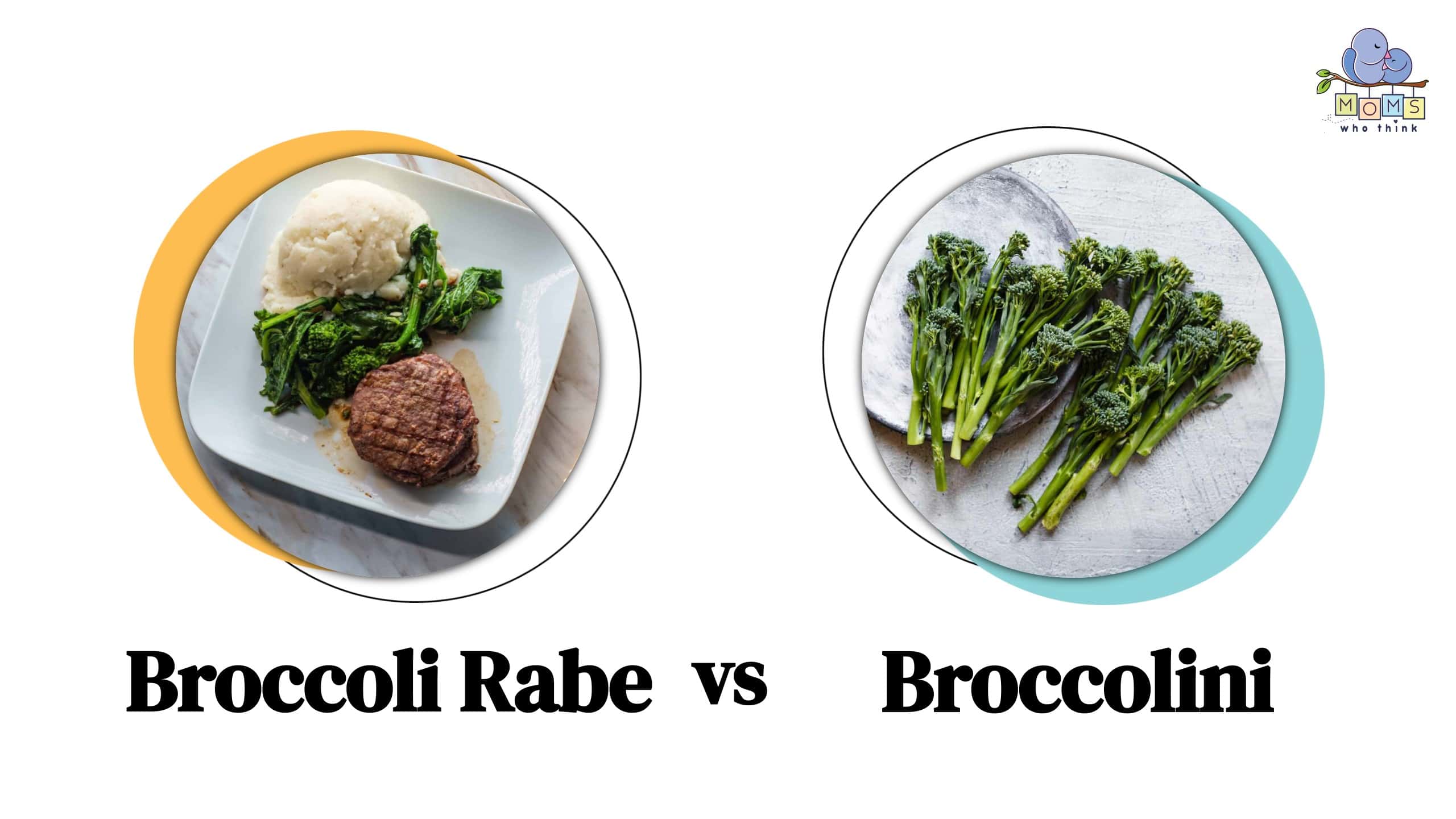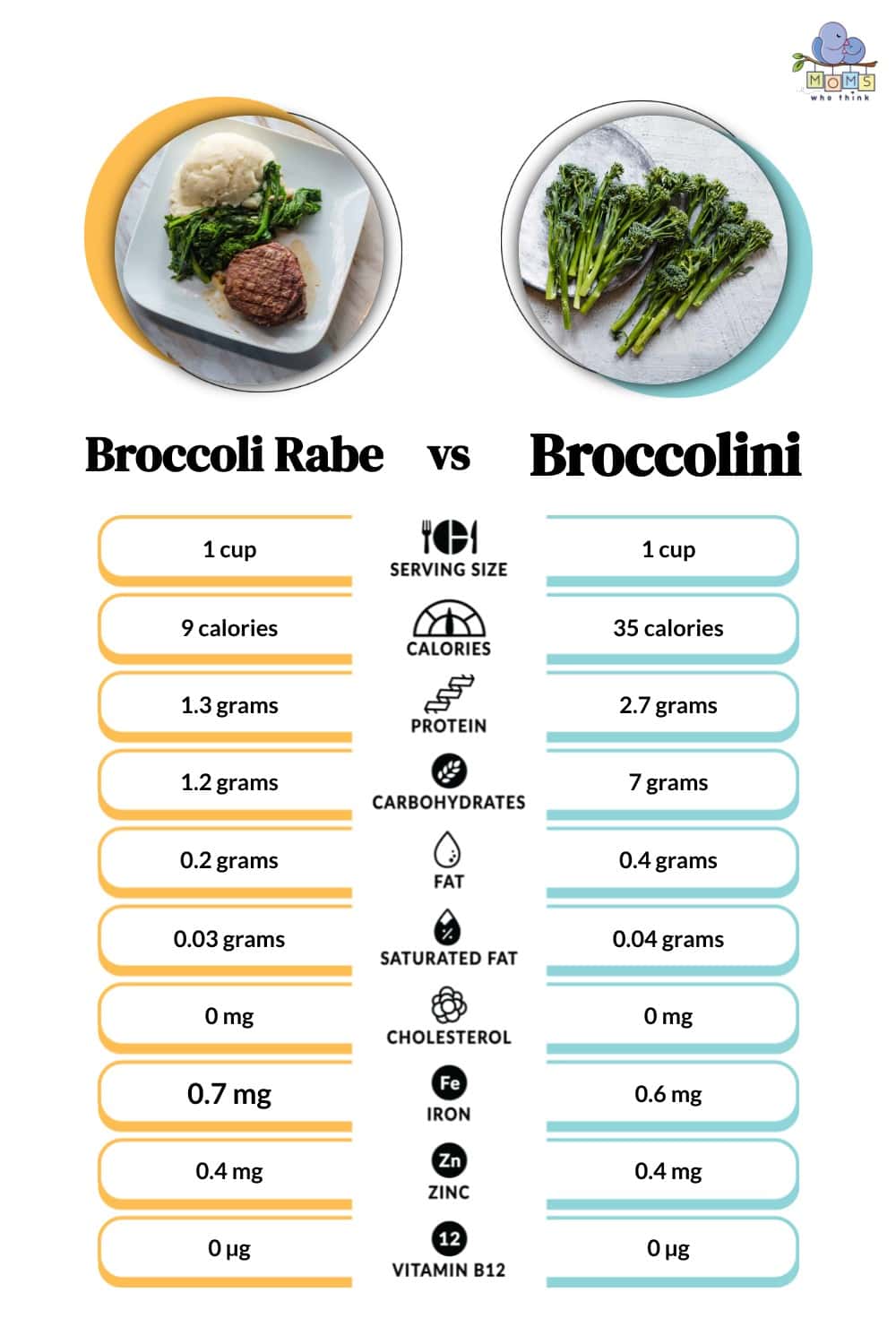

Broccoli Rabe vs. Broccolini: Cooking with Each, Health Comparison & 3 Key Differences
Are you a home cook looking for some inspiration in the kitchen? Look no further than your farmers market or produce aisle for broccoli rabe or broccolini. These two tasty green vegetables are getting a lot of attention and are worth getting to know. Both veggies are fairly new to the culinary scene and look similar to standard broccoli but with some key differences. Broccolini is often mistakenly thought to be baby broccoli, but it's actually a hybrid of broccoli and Chinese broccoli. Both vegetables have a slightly bitter, almost nutty flavor that is great in stir fries and side dishes. They are both tasty and easy to cook with, making them great for novice home cooks. If you aren't sure which to use, the difference comes down to taste and texture. Let’s take a deeper look at these two newcomers to the produce aisle and look at the best way to use each.
Broccoli Rabe vs. Broccolini: Nutritional Differences

Broccoli rabe and broccolini are both cruciferous vegetables rich in vitamins and minerals. But they have some differences that you might want to understand before reaching for the cutting board. The three main differences between the two are calories, protein, and carbs. Broccoli rabe has only 9 calories per cup, while broccolini has 35 calories per cup. While both are low-calorie vegetables, broccoli rabe is the clear winner. When it comes to protein, broccolini is the best choice, with 2.7 grams of protein per cup, while broccoli rabe only has 1.3 grams. As for carbs, the broccoli rabe is the clear choice for anyone watching their carb content, with only 1.2 grams of carbs per cup, while broccolini surprisingly has 7 grams, which is the same amount of carbs as six ounces of Greek yogurt.
For a better overall picture, we look to Healthline. The experts at Healthline explain that broccoli rabe is rich in vitamins and minerals and is a great source of fiber. Fiber is what makes you feel full and satiated and, ultimately, snack less. So adding broccoli rabe to your diet can help you not only get more important vitamins and minerals in your body but also help keep you full so you stop reaching for snacks throughout the day. And for those needing more plant-based proteins, like vegetarians and vegans, it is an excellent source of plant protein.
Broccolini is similar to broccoli in vitamins and minerals. And like broccoli rabe, it's also full of fiber and antioxidants. And even though it has more calories than broccoli rabe, it's still a low-calorie option. Web MD helps put that in perspective and explains that a cup of broccolini has the same amount of protein as white rice but a lot less calories, making it a good choice for anyone wanting to up their protein intake while watching their calories.
What is Broccoli Rabe?
Broccoli rabe is a green cruciferous vegetable that is sometimes referred to as rapini. The leafy green vegetable is actually more closely connected to turnips than broccoli. It is fairly new to the produce section, and more and more home cooks are starting to add it to their carts. This green vegetable has thin stalks with small buds at the ends and lots of leafy greens. It has a naturally strong bitter taste, similar to mustard greens, which makes it unsuitable for the crudité platter. You can saute it with garlic, roast it with herbs, or braise it in wine. It has long been used in Italian and Mediterranean cooking but is starting to make its appearance in other cuisines, too. If you can’t find it in your regular supermarket, try a health food store or international market.
What is Broccolini?
Broccolini sounds like baby broccoli, but it's a little more complex than that. Broccolini is actually a hybrid between regular broccoli that you can find in any supermarket and Chinese broccoli. Chinese broccoli is popular in Asian cuisine, and in the U.S., you can find it in international markets. The Sakata Seed Corporation in Japan created and trademarked it in 1993. At first, they named this hybrid vegetable “asparation” mainly because the long stems and flavor resembled asparagus. But the name didn't stick, and the punchy broccolini was eventually used. This is probably where the confusion about broccolini started because the suffix “ini” is a diminutive meaning little in Italian; hence, broccoli “ini” would translate to “little broccoli’. But we think everyone can agree that it's the better choice between the two names. Broccolini has long, thin stems and small open florets. It has a sweet, slightly delicate flavor and isn't as bitter as regular broccoli, but you can substitute it for any dish that calls for broccoli.
How to Cook with Broccolini Rabe
The bold, bitter taste of broccoli rabe can stand alone as a side dish, or you can add it to other dishes. While there are a lot of different ways you can cook broccoli rabe, it is usually blanched first in salt water to tone down some of the intense bitter flavors before cooking it with herbs, spices, and sauces. If you are new to cooking and unfamiliar with the fancy term blanching, it just means to throw it in boiling water for a minute or two and then quickly remove it.
For your first foray into cooking with broccoli rabe, we suggest that you make the Italian side dish that has made the vegetables so popular: sauteed broccolini rabe. Start by blanching, then saute it in olive oil with some fresh garlic and a pinch of salt and pepper. If you like a little kick, we suggest adding a teaspoon of red pepper flakes. Then, finish it with a squeeze of fresh lemon for some acid to balance it all out. You can serve it as a side dish to grilled protein like chicken, fish, or steak.
Side dishes aren’t the only way to use those sauteed greens; you can mix them with caramelized onions and add them to hot sandwiches or burrito bowls or throw them on a flatbread or pizza. The bold flavor matches well with creamy, tangy cheeses and smoky meats like Italian sausage and Mexican chorizo. The flavors make a great combination, and you can indulge all you want with this healthy green.
Ideally, you will want to use the sauteed broccoli rabe within a few hours of cooking because it doesn’t keep well in the refrigerator; reheating will make it soggy, and that toothy texture will turn mushy.
Technically, you can eat broccoli rabe without cooking it, but you probably would not want to because the bitter bite is too much for most people.
How to Cook with Broccolini
Broccolini can do anything that broccoli can do. So, it makes a better replacement for broccoli than broccoli rabe. Try replacing regular broccoli in pasta dishes, stir-fries, frittatas, and anything else that you like to make with broccoli.
If you are looking for broccolini in the farmers market, the peak season is the spring and summer, but some places, like Whole Foods or Trader Joe's, may have it year-round. Or you can always grow your own broccolini; it's fairly easy to grow and even grows in pots.
When choosing between broccoli rabe and broccolini, one thing that might determine which one to choose is price. Broccoli rabe is more expensive than broccolini because it is more labor-intensive. If you have a recipe that calls for broccoli rabe, the best substitution that won't be too hard on your wallet is mustard or Collard greens.